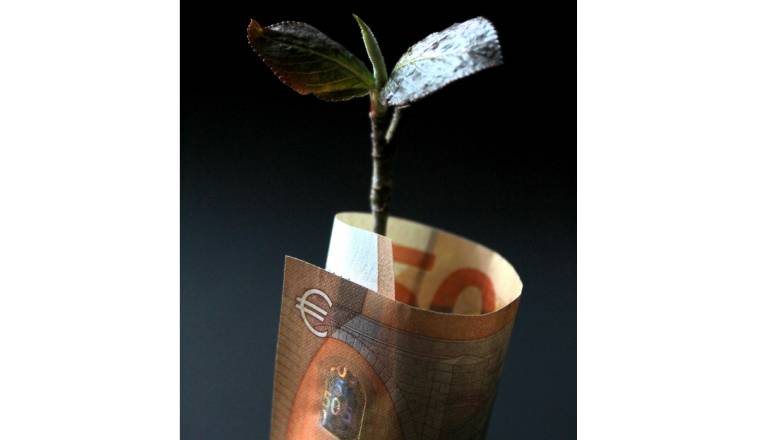The Indian banking sector is taking a green leap!
As per IEA estimates, India requires Rs 160 billion per year till 2030 for its energy transition/decarbonization journey. That means the country has a large opportunity for green funding. It could be met with a combination of domestic and international funds. As a first respondent, domestic funds would be the target.
India’s plan to establish a Green Bank by 2023 could significantly impact the global market, despite requiring an estimated $1.5 trillion investment by 2030. On January 25, 2023, India issued the first tranche of its first sovereign green bond worth INR 80 billion (equivalent to $980 million). On February 9, 2023, the Government of India announced the issuance of another INR 80 billion ($968 million) in sovereign green bonds.
For the last couple of years, Indian entities including financial institutions have been cautiously taking steps towards green financing. But it is not visible yet. However, a few headlines that caught my attention in the last few days stamp the inevitable.
- Google, HSBC to offer venture debt financing option to GCR-Sustainability
- HDFC Bank raises $300M through maiden sustainable finance bond
- The DBS Bank supports the Indian arm of Louis Dreyfus to achieve sustainable finance for RSPO-certified palm oil procurement
- SBI raises $250 million through green notes
Incidentally, the Indian banking sector is working towards achieving net-zero targets by 2070.
Sustainable initiatives from the banks are no longer limited to extending support through CSR, digitization, or green energy adoption. These are taking the shape of true green financing products.
The Indian banks have embarked upon a slew of measures to support sustainable finance. Besides issuing green bonds, the banks are showing a keen interest in financing green infrastructure, renewable energy, water, and waste management projects, among others.
No longer is the Indian bank transacting in a silo. A majority of the banks have gone paperless and are adopting renewable energy to promote sustainability internally. They are giving more weightage to the green factors while dealing with the external stakeholders.
And it is not just the global and domestic compliances that have triggered the change. They are active participants in the call to action to save planet Earth and limit the global temperature to pre-industrial levels by Paris goals.
Green banking-the current scenario:
According to reports, the combined net profits of 32 listed private and public sector banks (PSBs) rose 40.56 percent to close to Rs 2. 29 trillion with both sets of banks crossing the Rs 1 trillion mark in net profits and a few recording their highest-ever net profits.
Indian banks are introducing new financial products linked to green initiatives, attracting investment and encouraging businesses to adopt greener practices. There is a shift from investments only in the renewable sector to more sectors now.
The banks have a social responsibility to promote sustainable practices, including environmental contributions. Sustainable finance involves financing both current and transitioning to environmentally friendly performance levels.
India has two finance organizations, Tata Cleantech Capital Limited (TCCL) and the Indian Renewable Energy Development Agency (IREDA), focusing on clean energy financing. IREDA provides funding for projects and plans to launch India’s Green Window, aiming to attract over Rs 210 billion in renewable energy investments. TCCL, a leading private sector Green Bank, has financed over 250 projects, reducing carbon emissions by nearly 16 MT annually.
SBI has launched the Green Chanel Counter and collaborated with Suzlon Energy Limited to generate green power. Other initiatives include tree planting, rainwater harvesting, and solar lamps in rural areas.
Indian banks focus on supporting environmentally friendly projects like renewable energy and agriculture to reduce their carbon footprint.
Global interest:
Green finance is gaining momentum in India’s economy as a tool for transitioning towards net-zero emissions. International organizations like the Asian Development Bank and World Bank have increased funding for green projects in India to reduce the gap in commercial investments in renewable energy and boost investor confidence. Indian green bond issuances reached $21 billion as of February 2023, with the private sector contributing 84% of the total.
Challenges:
Since 2007, India has promoted green financing, with Green Banks adhering to strict environmental standards. India’s green financing, including sustainability-linked loans, bonds, and equity investments, is undergoing continuous evolution, with increased demand driving innovation in this area. Currently, creating a Green Bank is unregulated, but effective regulation requires disclosing carbon emissions.
Green banks face challenges driving a reformative shift towards a sustainable economy, including limited funding, political and regulatory uncertainty, lack of awareness, limited market demand, risk management, and scalability. Additionally, they may struggle to expand their operations and finance larger projects.
How to overcome these challenges:
Green banks can promote sustainable finance by enhancing public awareness, increasing access to capital, developing safeguarding policies, focusing on innovation, and building a tailored track record.
Technology plays a significant role in green finance, enabling banks to comply with reporting rules, improve practices, and model climate risk, with growing awareness of its potential.
The other methods are:
- Creating marketing campaigns
- Collaborating with other financial institutions
- Working with governments to implement regulations requiring financial institutions to report on their ESG performance
- Partnering with established institutions on sustainable projects
Our take:
The Indian government should allocate capital towards regional green banks and windows, using low-cost public funds and government guarantees to finance renewable energy projects and reduce carbon emissions.

